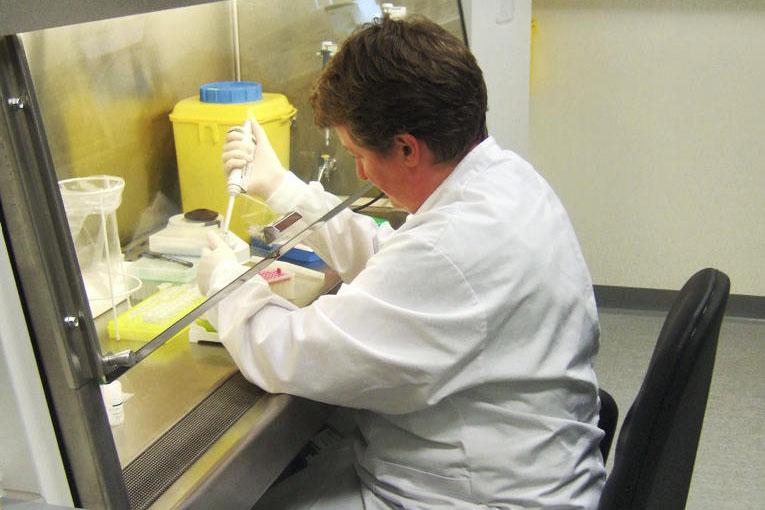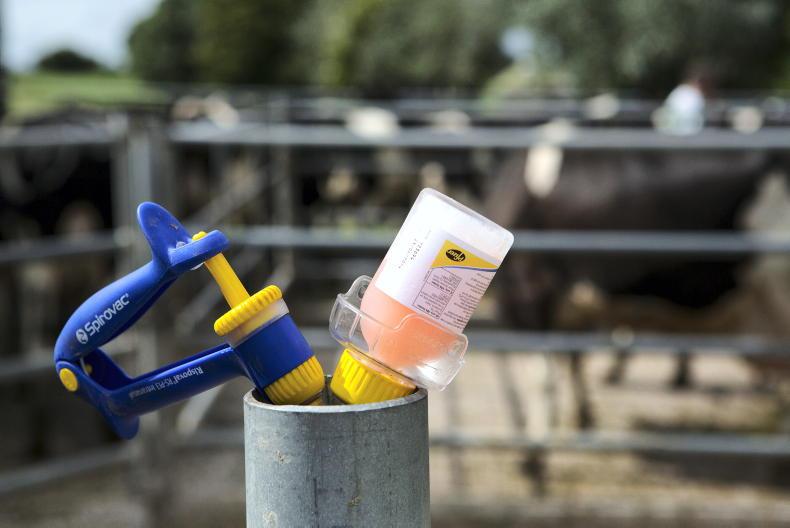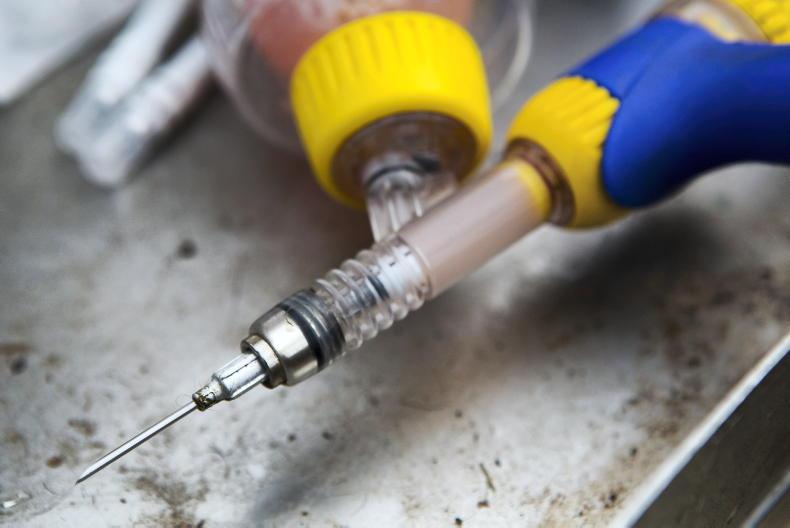Ovine chlamydiosis (enzootic abortion of ewes [EAE] or ovine enzootic abortion [OEA]) is caused by the bacterium chlamydophila abortus. Sometimes this may present as a ewe losing lambs before she reaches full term, but sometimes it can result in a ewe giving birth to weak or unviable lambs at full term.
Cause
Ewes may be infected at any stage of their lives by coming in contact with the birth fluids/ placenta of other infected ewes, therefore the lambing shed is the usual location for spread of infection. It is caused by a bacterium, chlamydophila abortus, that spreads to the womb and afterbirth of an unprotected sheep and kills the developing lambs. Aborted lambs, afterbirth and discharges from aborted ewes are heavily contaminated and can infect other pregnant sheep. Non-pregnant female sheep, including newborn lambs, can pick up the infection from an aborting ewe and the organism will remain latent until the animal is 90 days pregnant and then become active, causing the animal to abort. If the disease is introduced to a flock, generally there are a small number of abortions in the first year. However, this gives the disease the opportunity to spread, so that there may be an abortion storm in the second year after introduction. The disease can be brought into a clean flock through buying in infected sheep that picked up the infection at lambing time. It may also be introduced by taking in orphan lambs from an infected flock.
Symptoms
Infected ewes show very little clinical signs of illness prior to aborting their lambs. Abortions typically occur in the last three weeks of pregnancy and weak, live lambs may be born in the same litter as dead lambs.
Most aborted lambs appear fresh and well-developed although the placenta will likely be inflamed and there may be some vaginal discharge after lambing. To properly diagnose the condition, samples of placentas and foetuses should be brought to a regional veterinary laboratory for analysis.
Treatment
In the face of an EAE outbreak, it is best to isolate the aborting ewes, dispose of the bedding and aborted products and disinfect the pen thoroughly. It can be controlled by treating the flock with long-acting oxytetracycline at 95-105 days of pregnancy. Ewes that have aborted should not be used as foster ewes. Speedy diagnosis is key to implement the correct treatment as soon as possible.
Prevention and control
The phrase prevention is better than cure is used a lot in this magazine but it is very much the case with abortion in sheep. The psychological impact on the farmer and economic losses of an outbreak can be very severe. Farms that had an outbreak in the past should implement a vaccination programme after consultation with a vet. If the health status of bought-in sheep is unknown than vaccination should be considered. Ideally replacements should be bred from within the flock. There are health schemes in Scotland, where farmers comply with a series of rules and testing arranges to provide an assurance that their flock is free of a number of diseases including EAE.
Enzovax is the only available vaccine for enzootic abortion. Administered at a dose rate of 2ml four weeks before the breeding season, it will help reduce abortion in uninfected ewes and also reduce the spread of disease. Enzovax can be administered at the same time as Toxovax, but treatments cannot be mixed and need to be administered at two different injection sites.
Finally, it is worth remembering this is a zoonosis. Pregnant or potentially pregnant women should be particularly careful handling ewes lambing. Immunocompromised people like those on chemotherapy likewise should also take precautions.










SHARING OPTIONS